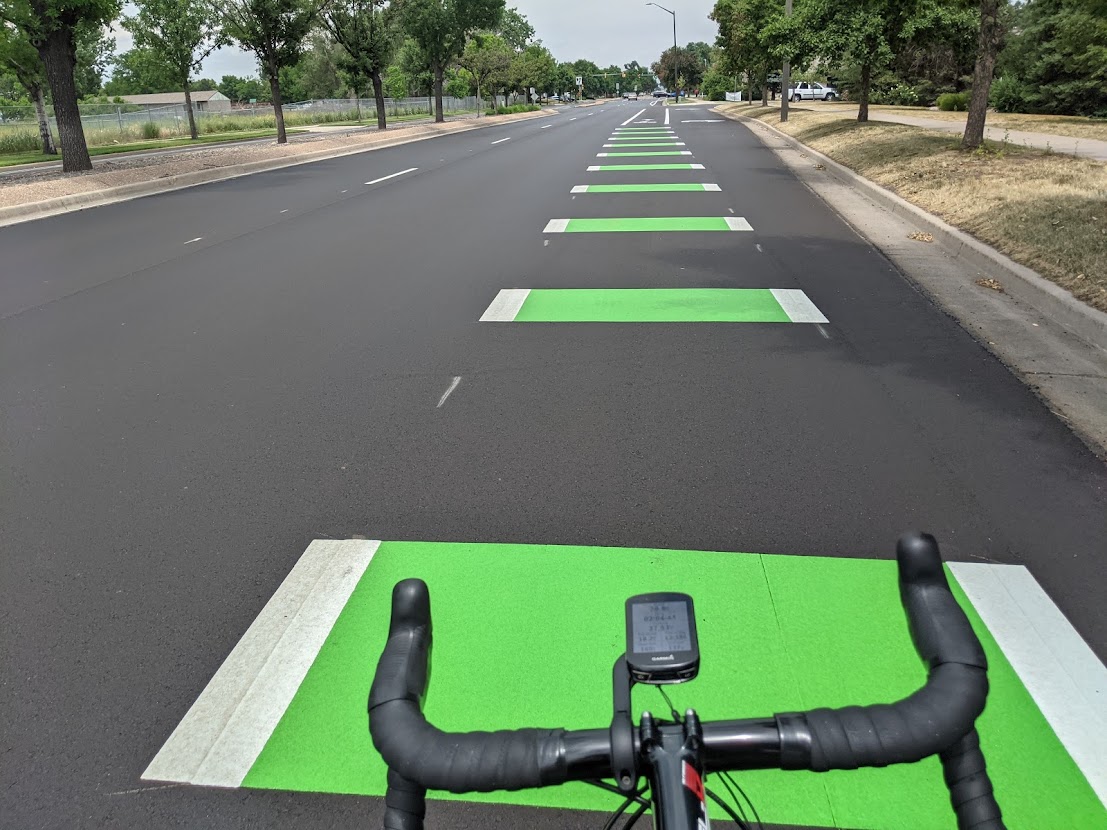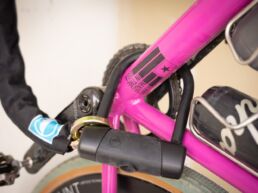 Governor Jared Polis signed the ‘Safety Stop’ bill into law at a ceremony Wednesday afternoon. House Bill 22-1028 applies to bicycles, e-bikes, and electrically assisted scooters and effectively allows them to treat stop signs as yield signs and red lights as stop signs. The exact language is below.
Governor Jared Polis signed the ‘Safety Stop’ bill into law at a ceremony Wednesday afternoon. House Bill 22-1028 applies to bicycles, e-bikes, and electrically assisted scooters and effectively allows them to treat stop signs as yield signs and red lights as stop signs. The exact language is below.
The Facts:
- Governor Jared Polis signed the ‘Safety Stop’ bill into law at 12:30 Wednesday April 13th.
- The law took effect immediately.
- With regards to stop signs-cyclists over the age of 15 will be required to slow down, 10mph or less, and yield the right-of-way to vehicular traffic or pedestrians, but they will no longer be required to stop.
- With regards to red lights-cyclists will be required to stop and yield right-of-way, but they may proceed before the light turns green.
- Cyclists under fifteen years of age and not accompanied by an adult must treat stop signs as stop signs and red lights as red lights.
Talking Points
Crashes Involving Bicycles in Delaware (2014-2020)
Highlight: All reported injury crashes involving bicycles at stop sign controlled intersections dropped 23% in the 30 months after adopting the Safety Stop compared to 30 months prior to adoption
Bicycle Safety and Choice: Compounded Public Cobenefits of the Idaho Law Relaxing Stop Requirements for CyclingStop Requirements for Cycling
Highlight: In year after adopting the “Idaho Stop,” crashes between bicyclists and motorists fell 14.5%, and Boise was 30-60% safer on a bicycle compared to similarly sized cities
Policies for Pedaling
Highlight: When cross traffic isn’t present, few bicyclists comply with stop signs and lights. When cross traffic is present, compliance with existing law is much greater. The Safety Stop legalizes commonsense and commonplace behaviors.
Innovative approaches of promoting non-motorized transport in cities
Highlight: Current laws are ensuring the ease and flow of motorized traffic often at the expense of the ease, flow and even safety of non-motorized traffic. Bicyclists are much more aware of their surroundings on the road, and thus much more likely to make smart decisions to protect their own safety at an intersection.
Scofflaw bicycling: Illegal but rational
Highlight: “The current iteration of our transportation system was not designed with bicycles in mind, and most bicyclists seem focused on surviving in a system designed for a very different mode of transportation.”
Identifying behavioral norms among bicyclists in mixed-traffic conditions
Highlight: “Bicyclists must choose to break the law out of safety concerns or abide by the law despite such concerns … when a bicyclist in the US behaves in ways that may feel rational, safe, and/or efficient, they are frequently breaking the law or behaving in a fashion that could be perceived as rude. This is largely due to the fact that in the US, the laws regulating driving are often often applied to bicycling, despite the obvious differences in these two modes.”
Bill Summary:
The bill summary can also be found here.
The complete bill can be found here.
Transportation Legislation Review Committee. An existing statute allows a municipality or county to adopt an ordinance or resolution specifying that a person riding a bicycle, electrical assisted bicycle, or electric scooter may make a safety stop, rather than a full stop, under certain circumstances when approaching an intersection that is controlled by a stop sign or a traffic control signal as follows:
- When approaching a stop sign, if it is safe to proceed, the person may, after slowing to a reasonable speed of 15 miles per hour or less, or 10 or 20 miles per hour or less if so specified by municipality or county for a particular intersection and marked with appropriate signage, and yielding the right-of-way to any traffic or pedestrian in or approaching the intersection, continue through the intersection without stopping; and
- When approaching an illuminated red traffic control signal, the person must first stop at the intersection and yield to all other traffic and pedestrians and then, when safe to do so, may proceed straight or make a right turn through the intersection or, subject to specified conditions, make a left turn onto a one-way street only.
The bill amends the statute to make the substantive requirements described above uniform statewide for most persons approaching a controlled intersection who are not operating a motor vehicle; except that the statewide “reasonable speed” is 10 rather than 15 miles per hour or less and the only municipal or county “reasonable speed” variance option is to increase the maximum “reasonable speed” for a particular intersection to 20 miles per hour. Such persons include pedestrians (approaching a controlled intersection with a stop sign) and operators of low-speed conveyances, as defined in the bill (approaching a controlled intersection with a stop sign or a traffic control signal).
The regulation of persons approaching controlled intersections is declared to be a matter of mixed state and local concern, and the amended statute is thus declared to supersede any conflicting local ordinance or resolution but not to affect the validity of any nonconflicting local ordinance or resolution that regulates the conduct of persons approaching controlled intersections. The bill does not create any right for a pedestrian or the operator of a low-speed conveyance to travel on any portion of a roadway where travel is otherwise prohibited by state law or a local ordinance or resolution.
Bicycle Colorado’s announcement:
Earlier today, on April 13, 2022, Governor Jared Polis signed the Colorado Safety Stop into law. That means bicyclists like you have a new safe and legal option to proceed through intersections across the state.
This new law means that when an intersection is clear and they already have the right of way, bicyclists ages 15 and older may now treat stop signs as yield signs and treat stop lights as stop signs.
Additional details of the law include:
- Younger bicyclists may perform the maneuver if an adult is present.
Bicyclists can yield and then proceed through stop sign-controlled intersections at up to 10 miles per hour. - Intersections where bicyclist-specific lights or signs are present that prohibit the maneuver are exempt from the new law.
- The bill defines “low speed conveyances” in Colorado law. These are small profile, low-speed vehicles that people use for transportation and recreation, including bicycles and electric bicycles, electric scooters (not including mopeds), and wheelchairs.
This has been an effort years in the making and all of us at Bicycle Colorado are immensely proud to cross the finish line on this safety-enhancing policy and call the Colorado Safety Stop the law of the land. The data is clear: this prevents crashes between bicyclists and drivers where they happen the most—intersections—and that’s why we’ve fought so hard for this to become statewide policy for so many years.
Continued here.






